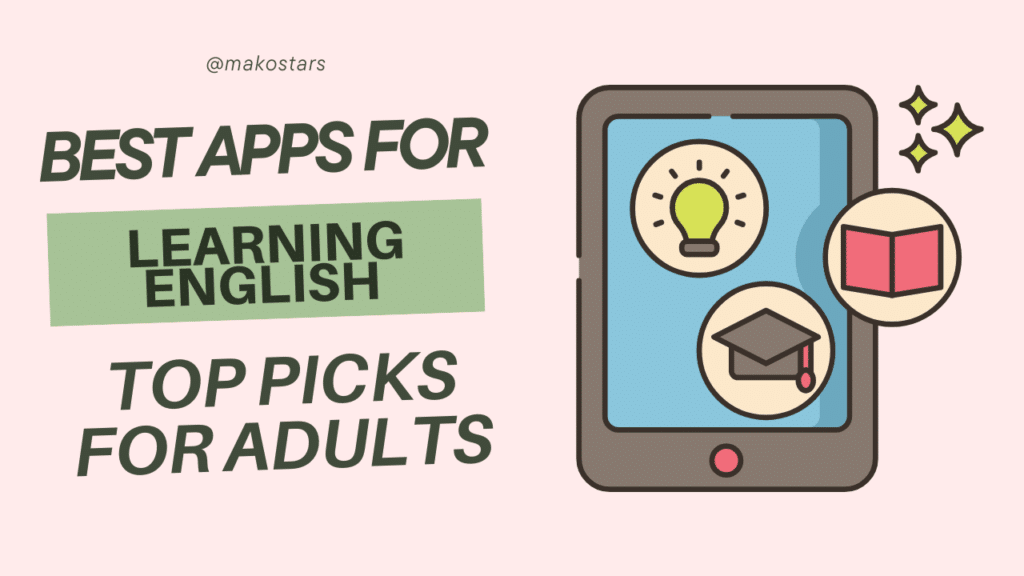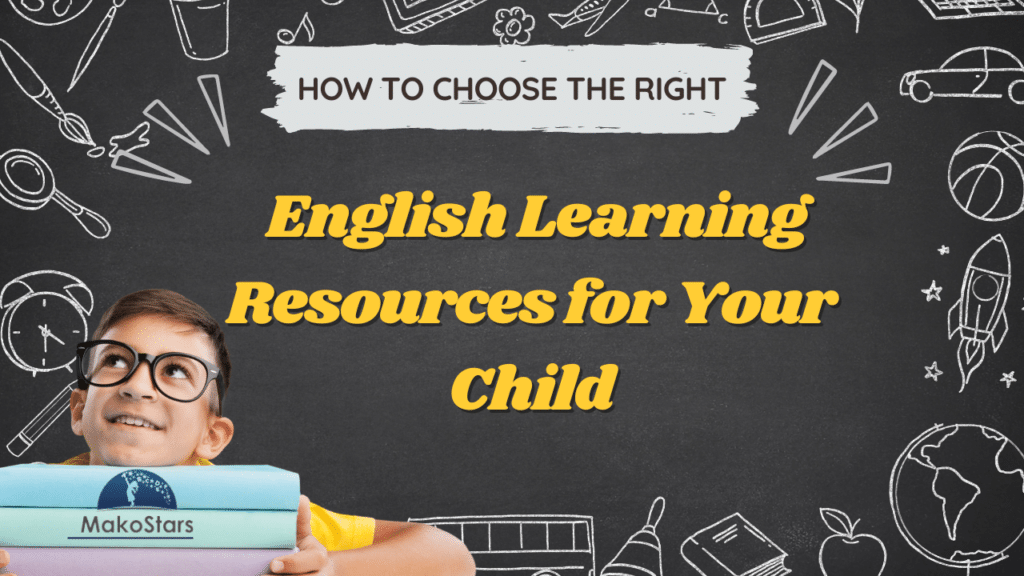Did you know that vocabulary building for adults can significantly enhance your communication skills and improve your overall language proficiency? Studies have shown that experiential learning improves retention rates and increases engagement, making it essential for adult language learners.
Adult learners face different challenges than children. You might find it hard to remember new words while managing your busy schedule and maybe even feeling nervous about mistakes. The good news is that you’ll find many more ways to learn vocabulary that work specifically for you. You can find the best learning methods based on your style, try adult vocabulary apps, or play vocabulary games for adults.
In this piece, you’ll find practical ways to add new words to your daily life, techniques that match your priorities, and ways to use your growing vocabulary in real-life situations. These approaches will help you build a strong English vocabulary that lasts.
Start with Your Daily Habits
Image Source: Etsy
You don’t need major lifestyle changes to build better vocabulary habits. Small tweaks to your daily routine can make a big difference. These vocabulary building techniques become natural parts of your schedule rather than extra tasks you need to complete.
Track new words from reading and media
Regular reading naturally exposes you to new vocabulary. Research shows that reading-related activities are the primary cause of vocabulary growth from grades four through ten. Adult learners can speed up this process by being more strategic about their reading habits.
Daily reading from different sources should be your priority. This helps you discover new words in various subjects and writing styles. Keep a small piece of paper as a bookmark to write down unfamiliar words without breaking your reading rhythm.
Digital tools can make tracking easier. Google’s Ngram Viewer, to name just one example, lets you see word usage patterns throughout centuries of published materials. This tool gives an explanation of language evolution and helps identify common terms worth learning.
Words often carry multiple meanings—experts call this polysemy. Your notes should reflect how a word’s meaning shifts based on its context.
Use sticky notes around your home
Your living space can become a vocabulary learning environment with strategically placed sticky notes. Studies reveal that learning about 3,000 words helps understand approximately 80% of a language. Surrounding yourself with new words makes learning feel more natural.
Sticky notes work best when you:
- Skip translations on household items to force recognition
- Give each room its own vocabulary theme (numbers and colors in living rooms, food terms in kitchens)
- Put notes above your bed for bedtime review
- Write shopping lists using target vocabulary for ground practice
Your learning priorities should guide how you create sticky notes. Some people write just the word, while others add translations, phonetic spelling, or small drawings. Writing and placing these notes activates your spatial memory and creates stronger word associations.
Not sure if you should be learning English as an Adult Find out more about the advantages of learning English as an Adult.

Keep a personal word log
A word journal tracks your vocabulary growth. Good word logs do more than list definitions—they help you understand and remember better. Each new word deserves a full page in your notebook. Write both the dictionary definition and your own explanation.
Your word log becomes more valuable when you add:
Personal experiences with the word, examples in different contexts, and related words or phrases. This method turns simple recording into active learning.
Students who note unfamiliar words while reading understand text better. Research also shows that seeing words in different contexts several times improves retention. Regular reviews of your word log—during commutes or while waiting in line—help maximize learning without eating into your busy schedule.
Choose the Best Way to Learn Vocabulary for You
Finding your unique learning style helps you build vocabulary faster. Your learning style shapes how you process, remember, and use new information. Individual-specific experiences are the foundations of successful vocabulary building.
Visual, auditory, and kinesthetic learning styles
People learn vocabulary differently based on their learning priorities. You’ll learn new words faster and more effectively once you understand your learning style.
Visual learners process information best through sight. You’ll benefit from these methods if you’re among the 65% of people who are visual learners:
- Mind maps and flowcharts that organize related words
- Flashcards with colorful images
- Highlighting techniques in your notes
- Graphic organizers that show word relationships
Auditory learners learn best through listening and speaking. You likely have an auditory learning preference if you remember song lyrics easily or prefer verbal explanations over written instructions. These learners do well with:
Vocabulary jeopardy games that involve listening to clues and providing verbal explanations. Auditory learners process new vocabulary better when they hear words pronounced and listen to verbal explanations rather than just reading definitions.
Kinesthetic learners learn through physical movement and hands-on experiences. Kinesthetic learners often say “Let me hold that” when they mean “Let me see that”. These learners remember vocabulary better when they:
Use standing desks or move while studying. Rhythmic motions like hand clapping or finger snapping help reinforce learning. Total Physical Response (TPR), where learners physically act out verbs or vocabulary, works exceptionally well.
Experimenting with different learning methods
Most adults combine different learning priorities, so experimenting helps you find your best approach. Research shows you need multiple practice opportunities to develop vocabulary.
Start by evaluating your vocabulary skills and think about specific situations where you need vocabulary help. Then test various methods to see what works best:
To cite an instance, see if vocabulary cartoons connect words to fun illustrations through memory techniques. If you prefer listening, try podcast learning or record yourself reading vocabulary lists.
You might have a favorite learning style, but stay open to other methods. Adults learn vocabulary better when it relates to their daily lives and interests. Real-life examples and context help you understand and remember new words better.
Combining multiple techniques for better results
Mixing approaches works better. Yes, it is true that dual coding—combining both words and visuals like images and graphic organizers—helps you understand and remember substantially better.
These combined approaches work well:
We created multi-sensory experiences by listening to audiobooks while following along with text. This method engages both visual and auditory pathways at once.
Create vocabulary mind maps and explain them aloud to use multiple learning channels. This approach works especially well when you have to hear, speak, read, and write words in various contexts. It builds both breadth and depth of vocabulary knowledge.
Technology offers a great way to get personalized learning. Apps and online exercises suit different learning styles through interactive games, visual aids, and audio pronunciations.
Everything in an effective approach gives you multiple exposures to words in different contexts. This technique works for all learning styles while strengthening connections between words and their meanings.
Top Techniques for Vocabulary Building

You need proven techniques to boost vocabulary retention. Research shows explicit vocabulary instruction works really well when students take part in understanding word meanings and connect relationships among words.
Write, look, cover, repeat method
This classic technique builds strong memory pathways by using multiple senses. You write the vocabulary word, look at it carefully, cover it up, and try to write it again from memory. The physical act of writing activates haptic learning centers in your brain, which makes this method work so well according to educational experts.
To get the best results:
- Write the word and its definition
- Look carefully and say it aloud
- Cover the word with your hand or paper
- Write it again from memory
- Check if it’s correct and repeat if needed
You should add another writing step before repeating the cycle if words are tough to remember. Adult learners find this well-laid-out approach really helpful because it cuts down the list of unfamiliar words each time they practice.
Flashcarding and spaced repetition
Flashcards are still popular because they work, especially when you combine them with spaced repetition. This scientifically-backed method shows you words at increasing intervals right before you might forget them. Studies show this technique substantially improves how well you remember words long-term.
Learning through storytelling and context
Stories power up vocabulary learning because our brains naturally process narrative information better. Adults often figure out meanings of unfamiliar words from stories without needing explicit definitions.
Context clues—words, phrases, or sentences around unfamiliar vocabulary—help you make smart guesses about meaning. Students who learn to use context clues effectively become better at figuring out word definitions than those who don’t get this training.
Using vocabulary in writing and speech
The main goal is to use new words in your own communication. Research confirms that using vocabulary in writing and speech helps you remember words better than just recognizing them.
Making up stories with multiple vocabulary words pushes you to process them deeply and creates lasting connections. On top of that, it helps to write sentences about specific situations, like your other classes or work scenarios, rather than random examples.
You should practice beyond just recognizing words by writing journal entries, talking with others, or doing regular writing exercises with your new vocabulary.
Explore Vocabulary Building Games and Apps
Image Source: FluentU
Technology today gives us amazing tools to build vocabulary through apps and games built for adult learners. Studies show that turning learning into a game can boost student participation, motivation, and results by making the experience more fun and interactive.
Best vocabulary building apps for adults
Vocabulary.com is a smart dictionary with an adaptive learning game that customizes your journey based on how you respond. Its clever algorithms help you learn over 17,000 words better by comparing your answers with millions of other users’ responses. Membean builds strong word connections in your brain by showing you nine different ways to learn each word.
Anki helps visual learners with flashcard decks that use spaced repetition to improve memory. The system shows you words at wider intervals right when you might forget them. WordUp takes a different approach by teaching words through context and uses videos and examples from movies, songs, and famous quotes.
Fun vocabulary building games for adults
Words with Friends works like Scrabble and challenges you to discover new words while playing with friends. The social aspect makes learning vocabulary a shared experience instead of studying alone. Vocabulary Race works great in classrooms where teams write words that start with the previous word’s last letter, which creates a fun competitive spirit.
7 Little Words gives you seven definitions and lettered tiles to form words. You learn new terms naturally as you figure out answers from words you know.
Gamified quizzes and challenges
Game elements like points, badges, and leaderboards make learning more exciting. Self-Determination Theory suggests these features can improve both internal motivation (doing things because you want to) and external motivation (doing things for rewards).
Kahoot and Quizizz let you take interactive vocabulary quizzes with instant feedback. Research shows these tools help reduce stress about practicing English and encourage students to take charge of their learning. Students say Kahoot “promotes a relaxing learning environment” and makes them “feel enthusiastic and motivated”.
You’ll find more vocabulary building tools and resources here to help speed up your word power journey. Click the picture below to find more fun apps!

Practice in Real-Life Situations
True mastery happens when you use your growing vocabulary in real-life scenarios. Your passive knowledge transforms into lasting language skills that stick with you through hands-on usage.
Role-playing and simulations
Students get a safe space to practice vocabulary through role-playing before they face high-pressure real-life situations. Adult learners often feel intimidated about speaking with native speakers. Role-play gives them a risk-free alternative that turns mistakes into chances to learn instead of moments of embarrassment.
To maximize role-play benefits:
- Prepare context-specific scripts focusing on situations you commonly encounter
- Identify and practice key vocabulary words related to each scenario
- Progress from reading scripts to improvisation as confidence grows
Role-playing gives you more than just vocabulary practice. Students overcome their fear of public speaking, see abstract grammar concepts in context, and use language creatively. These exercises let students “put their language skills into real use in real-world situations”, according to one teacher.
Using vocabulary at work or in social settings
Your retention speeds up when you add new words into daily conversations. The best approach is to use a new term you learn that day in the right context. This turns simple word recognition into active language mastery.
A small reminder note in your pocket with words you learned helps create natural opportunities to use them in conversations. One language learner shared this advice: “Use them in everyday life. Find excuses to use those words you’ve just been introduced to lately”.
Joining language exchange groups
Language exchanges pair you with native speakers so you can practice together. Platforms like Tandem and HelloTalk match conversation partners based on language interests and location. These exchanges are a great way to get exposure to natural speech patterns and cultural contexts.
Language exchanges give you cultural insights and help you make social connections. You can join exchanges online or in-person, which works well with busy schedules. Students can take their English skills further with classes at Bumble B English in Tokyo, where structured learning adds to these exchange opportunities.
Note that real-life practice builds stronger neural connections than passive learning alone. Ground application becomes a vital final step to build vocabulary effectively for adults.
Conclusion
Adults need consistent effort and smart approaches that match their learning style to build a strong English vocabulary. This piece explores many ways to expand your word power. You can integrate vocabulary practice into daily routines and pick techniques that match your learning priorities.
Small daily habits mark the start of becoming skilled at vocabulary. You can track new words while reading, place sticky notes around your home, and keep a personal word log. These create many chances to reinforce vocabulary. Your retention rate improves when you know whether you learn best through visual, auditory, or kinesthetic methods.
Apps and gamified learning make vocabulary building more fun while helping you remember words longer. These tools make the learning process engaging and give you the practice you need. You can find more detailed vocabulary building resources at Makostars or improve your English with tailored classes at BumbleB English in Tokyo.
Real-life practice puts your vocabulary skills to the test. You cement your learning through role-playing scenarios, using new words in workplace talks, and joining language exchanges.
Building vocabulary isn’t about memorizing lists – it’s about making meaningful connections with words. Each word you master helps you express yourself better and with more confidence. Your steady efforts will reshape your communication skills and open doors to both personal and professional growth.



